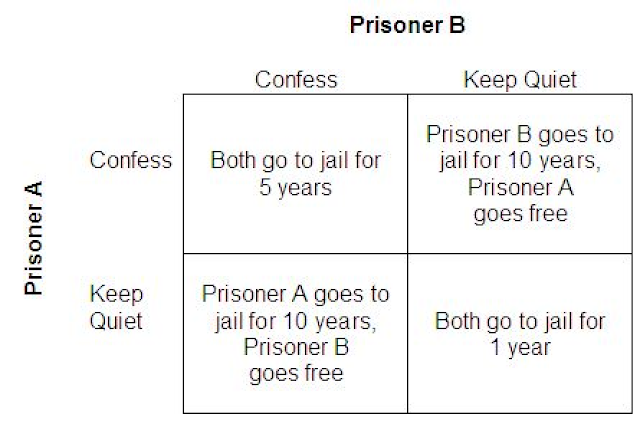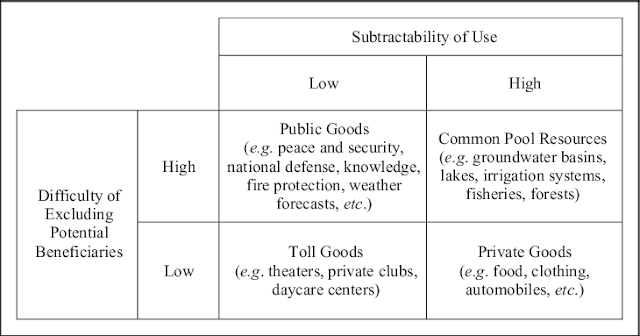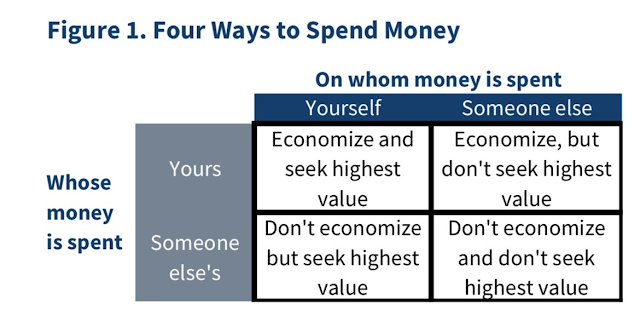Summary:
Why is the Council of Economic Advisers producing party political propaganda for the GOP? As many folks have pointed out, the "report" is rather bizarre. My favorite part is Figure 1, which summarizes Milton Friedman's argument that people spending "their own money" are "more careful how much to spend and on what the money is spent." This, of course begs the question of how that money came to be defined as "their own." Let's complicate that story, though, with a couple more matrices: First, Prisoner's Dilemma: Figure 2: Prisoner's Dilemma Next, Elinor Ostrom's typology of property: Figure 3: Typology of property Figure 1 assumes that there is only one kind of decision situation and only one kind of good. Figure 2 introduces a different kind of decision situation and Figure 3
Topics:
Sandwichman considers the following as important:
This could be interesting, too:
Why is the Council of Economic Advisers producing party political propaganda for the GOP? As many folks have pointed out, the "report" is rather bizarre. My favorite part is Figure 1, which summarizes Milton Friedman's argument that people spending "their own money" are "moreWhy is the Council of Economic Advisers producing party political propaganda for the GOP? As many folks have pointed out, the "report" is rather bizarre. My favorite part is Figure 1, which summarizes Milton Friedman's argument that people spending "their own money" are "more careful how much to spend and on what the money is spent." This, of course begs the question of how that money came to be defined as "their own." Let's complicate that story, though, with a couple more matrices: First, Prisoner's Dilemma: Figure 2: Prisoner's Dilemma Next, Elinor Ostrom's typology of property: Figure 3: Typology of property Figure 1 assumes that there is only one kind of decision situation and only one kind of good. Figure 2 introduces a different kind of decision situation and Figure 3
Topics:
Sandwichman considers the following as important:
This could be interesting, too:
Robert Vienneau writes Austrian Capital Theory And Triple-Switching In The Corn-Tractor Model
Mike Norman writes The Accursed Tariffs — NeilW
Mike Norman writes IRS has agreed to share migrants’ tax information with ICE
Mike Norman writes Trump’s “Liberation Day”: Another PR Gag, or Global Reorientation Turning Point? — Simplicius
careful how much to spend and on what the money is spent." This, of course begs the question of how that money came to be defined as "their own."
Let's complicate that story, though, with a couple more matrices: First, Prisoner's Dilemma:
 |
| Figure 2: Prisoner's Dilemma |
Next, Elinor Ostrom's typology of property:
 |
| Figure 3: Typology of property |
Figure 1 assumes that there is only one kind of decision situation and only one kind of good. Figure 2 introduces a different kind of decision situation and Figure 3 introduces three different kinds of goods. Are Trump's "economic advisers" really so ignorant of basic economic concepts beyond the most elementary textbook simplification?

